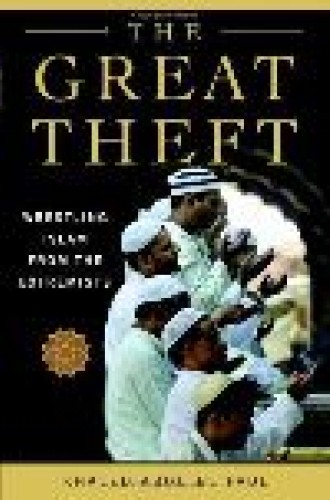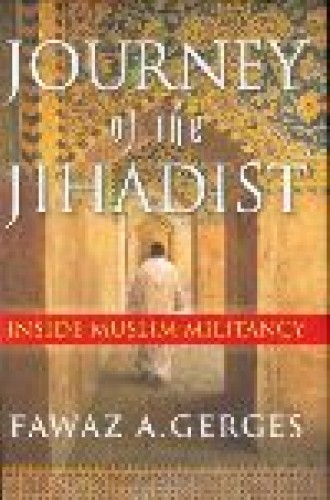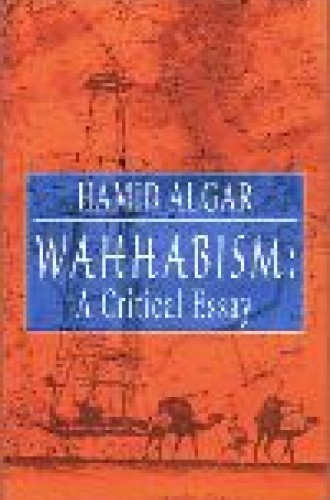Anxious Muslims
When I am asked why Muslims have not stood up to denounce terrorism, I often suggest that the questioner do a Google search under “fatwa against terrorism” (it will spew some 80,000 hits), or I ask if he or she knows where in the Muslim world the largest demonstrations against the attacks of 9/11 took place (Tehran and Karachi). I’ve spent years in various parts of the Islamic world, and it’s obvious that militant political religion does appeal to some Muslims. But most Muslims do not approve of terrorism or acquiesce in it. Their typical response to terrorism is fear, stress and anxiety—fear in the face of agents of extremism who feel unconstrained by mainstream Islamic law; stress at the thought of a son or daughter becoming a supposed holy warrior; and anxiety over the future of an entire faith community.
Much of this anxiety is reflected in these four books, which aim not to save the West from terrorist attackers but rather to save Islam from those same attackers, who pose the greatest threat to that faith tradition. Khaled Abou El Fadl of the UCLA Law School draws on his training as a jurist in Islamic law to put forward both a critique of extreme fundamentalists—or Puritans, as he calls them—and a summons to action in defense of Islam’s moderate center.
The crisis Abou El Fadl is addressing has its roots in the 18th-century movement based on the teachings of Muhammad ibn Abd al-Wahhab. This Arabian firebrand preacher wrote little of substance, but his strident version of Islamic doctrine and duty was energized by a political alliance with the house of Saud. The ideologue and the muscle teamed up, and despite several military setbacks inflicted by the Ottomans and the Egyptian pasha, this alliance gained a standing in Arabia. In concert with British imperial interests and the discovery of vast oil reserves, it institutionalized itself in the 1930s with the founding of the Saudi state. As a state ideology backed by seemingly endless petro-dollars, Wahhabism has been exported throughout the Muslim world.
Abou El Fadl argues that thanks to the colonial interventions in the Muslim world, the legal institutions that traditionally worked to marginalize peripheral or extreme versions of the faith were missing. Islamic religious discourse has historically emphasized study of the Qur’an, Hadith (literature preserving the model of the Prophet Muhammad), Shari‘a (law) and Tasawwuf (mysticism). The Wahhabis sought to reorganize the constituents of the religion by exorcising mysticism, stripping away the accumulated knowledge of centuries of Qur’an commentary, and turning Hadith into a one-dimensional source of proof texts for their revised version of Islamic law.
Wahhabism filled the power vacuum created by the decline of the traditional jurist class throughout the Muslim world. Abou El Fadl points out the paucity of this Puritan version of the Shari‘a. Law has been essential to Islamic society and religious practice from early on, and the author rightly defends it against the Western prejudice that sees every expression of it as repressive and inhumane. The founder of Wahhabism was not trained in law, nor were later Puritans, such as Sayyid Qutb and Osama bin Laden. Abou El Fadl wants to save Islamic law, make room for the mystical and devotional impulses of the Muslim tradition, and marginalize the Puritans and their fraudulent, if attractively oversimplified, interpretations of Shari‘a.
Vali Nasr takes a rather different approach to the problem of diversity and the middle ground. As a political scientist, his analysis revolves around historical negotiations and struggles over power. His primary interest is in the Shi‘a minority.
Shi‘ism was born out of the conviction that the leadership of the entire Muslim community may be claimed only by a particular line of imams, all direct descendants of the Prophet Muhammad. In the majority Imami version of Shi‘ism, this line ended with the disappearance of the 12th imam in 939 CE. At this point a clerical class asserted its leadership role over the Shi‘a masses—a centralization of authority that would have no parallel in the wider Sunni Muslim context.
Besides offering this new structure, Shi‘ism distinguished itself by its devotional practices, among the most important of which are the dramatic public commemorations of the death of one of the early imams, Hussein, grandson of the Prophet. This and other public displays of Shi‘a identity have usually been suppressed by the Sunni majority. Shortly after the fall of Saddam, CNN showed images of large Shi‘a observances commemorating the martyrdom of Hussein. For the first time in decades the public fountains in southern Iraq flowed red—the water dyed to represent symbolically the self-sacrifice of the Prophet’s family in the face of injustice and tyranny.
The Shi‘a, who constitute only about 15 percent of the entire Muslim population, are concentrated in Lebanon, southern Iraq, Iran and parts of Pakistan. Nasr concludes that despite their numbers and their history of marginalization, the Shi‘a are poised to reassert their interests and bring a new balance of power to the Middle East.
Nasr documents the plight of various Shi‘a communities as they endured repeated attacks from the Wahhabis. In the fundamentalist worldview that idealizes the earliest Muslim community in seventh-century Medina, the Shi‘a are not only considered illegitimate upstarts, they are not even regarded as Muslims. The Shi‘a of eastern Arabia and of nearby southern Iraq were all considered fair game to the Wahhabis as they grew in political and military significance. The fact that today the Saudi regime exports Wahhabi ideology through its funding of religious schools and literature, especially in the poorer parts of the Muslim world, has only exacerbated Shi‘a resentment.
Against the backdrop of these developments Nasr seeks to connect three very large dots: Lebanon, Iran and Pakistan. He notes that in Lebanon, where Shi‘a constitute the largest single community (distinct from the Sunni and Christian communities), they have only recently begun to flex their collective muscle.
Competition along confessional lines was not always the norm. In the 1950s and 1960s pan-Arabism as a political orientation was dominant throughout the Middle East. In significant numbers, young Lebanese Shi‘a joined up with their Sunni neighbors to fight enemies among the Christians and the newly established Jewish state. However, as Arab nationalism faded there and elsewhere in the Muslim world, religious ideology took its place. Among the Lebanese Shi‘a the result was two movements, Amal and Hezbollah, both of which assert a conservative religious identity mixed with a political and social mission.
The second dot, and a much more imposing force, is Iran, which asserted its fundamentalist identity through sweeping social and legal reforms after the Shi‘a clerical class overthrew the shah in 1979. The third dot is Pakistan. Nasr describes Pakistan as the battleground for the Red (Shi‘a) fundamentalists and their opponents, the Green (Sunni) fundamentalists. The Wahhabi-inspired groups in Pakistan, in addition to sheltering bin Laden, have long been engaged with their Red opponents, who are clandestinely backed by neighboring Iran.
The question of diversity is multifaceted here. On the one hand fundamentalist entities like Hezbollah and the Iranian ayatollahs have, with the aid of modern weaponry, attained political leverage over the perceived enemies of Shi‘a everywhere, while in Iraq, Ayatollah Sistani, in laying out the blueprint for a new order, has formulated a constitutional equation that champions Shi‘a identity but also embraces democratic principles. Sistani is not alone in imagining a Shi‘ism that maintains a wider humanist perspective; in the 1960s Ali Shariati, although not a cleric, called for a revolutionary Shi‘ism, one that reflected the orientation of liberation theologians and saw the pursuit of social justice as a religious duty.
Fawaz Gerges of Sarah Lawrence College distinguishes mainstream Islamists from jihadis and militant Islamists according to their stance on operating within or outside the political process, and on the use of violence. Gerges draws on his own family’s history in Lebanon, which witnessed the rise of both Islamic and Christian fundamentalisms in the 1970s. The majority of this first generation of Islamists in Lebanon—and even more famously in Egypt—eventually abandoned any attempt to overthrow Arab regimes by violence. The major factor prompting this decision and their participation in the democratic process was simply public opinion: the Muslim Brotherhood attracted many more sympathizers for each school or hospital it built than it did for any political assassination.
A middle ground might have been found with many of these Islamists after 9/11. Gerges quotes Hezbollah leaders who responded to news of the attacks with optimistic statements about how the West would now build bridges to Arabs and Muslims to “begin the healing process.” Hussein Fadlallah asserted that the “clash of civilizations” is a myth; he condemned U.S. foreign policy as “arrogant” but went on to remind bin Laden that “civilized Islam” does not condone preemptive attacks on civilians, American or otherwise. In Egypt the Jama’a Islamiyya, a high- profile and very active Islamist group, condemned al-Qaeda’s attacks on civilians and even recalled the U.S. role in curbing Serb atrocities against Muslims in Kosovo. In short, mainline Islamists saw 9/11 as a blunder.
Yet some militants praised the 9/11 operations, adopting the logic that any damage done to the U.S. was to be welcomed. Here Gerges points to an ominous shift of the middle ground, noting that many mainstream Islamists have begun to side with the militants on the issue of Iraq. The attacks of 9/11 were understood by most Islamists as ethically and legally unjustifiable, and American support for Israel and various Arab dictators, while seen as reprehensible, was not viewed as an immediate threat. But the U.S. presence in Iraq has been seen as such a threat. While only the most militant Islamists mourned the fall of the Taliban, mainstream and militant Islamists have found common cause in the desire to expel the U.S. and its allies from Iraq. Ironically, the final outcome in Iraq might be that an Arab nationalist state is replaced by a militant Islamist state, thanks to U.S. intervention.
The role played by Wahhabi ideology is the source of a debate at the heart of Islamic theology and self-identity. Hamid Algar takes a close look of his own at the implications of Wahhabi doctrine. His assessment, conservative in the sense that it champions the traditional diversity of opinion and practice within the Islamic community, does not shy away from the darker implications of Wahhabism.
From its inception the movement has been accused of being outside the mainstream tradition. Algar sees only a tenuous connection between Wahhabism and the modern Islamic reform tradition of Salafism—the latter having inspired most moderate Islamist movements. The tilting point that marginalizes Wahhabism is its willingness to proscribe all Muslims who do not follow its revisionist position on Islamic principles and history. Algar describes as intellectually thin Abd al-Wahhab’s elaboration of a primitive and pristine Islam, one free of its structures of law, theology and mysticism and claiming to need nothing more than the Qur’an and the model of the Prophet (Sunna).
Algar lays out key Wahhabi principles. Most important among these is the insistence that worship exclude all mention of any figure other than the petitioner and God. This approach Algar characterizes as intrinsically censorious.
He cites several Sunni and Shi‘a sources which maintain that praying for someone at a grave is a practice established by the Prophet himself—yet the practice is condemned by the Wahhabis. Many other devotional practices that originated with the companions of the Prophet are also summarily anathematized by Wahhabi doctrine. Wahhabis invoked their doctine not only to destroy the Arabian graves of important early Muslims, but also to attack the institutions of mysticism (Sufism) everywhere it found them.
In the 19th century the cities of Karbala, Medina and Mecca bore the brunt of Wahhabi attacks. In the second half of the 20th century, the ideological reach of Wahhabism far outstripped its military capacities, but backed by Saudi money and prestige as guardian of the holiest sites in Islam, it has inserted itself not only into the educational institutions of many poor Muslim countries but into various Muslim service associations in the West. Muslim communities in Europe and North America have not been able to free themselves from the influence of Wahhabism. The middle ground within Muslim communities is at stake.
By taking seriously Islam’s middle ground, all of these books offer a much more complex picture of Islam than the media generally provide. Will the middle ground be radicalized? Will diversity be erased by a sanitizing fundamentalism? Who will oppose the militants, and how? These authors touch only lightly on such problems. Beyond a few nods to the need for an Enlightenment within Islam, Algar, Nasr and Gerges offer little by way of strategy. Even their endorsements of a move into modernity are unimpressive, inasmuch as they naively assume that modernity has cured the West of its violent and intolerant impulses. Though calls to wage genocidal war may not be couched in religious rhetoric, the body count has soared as secular ideologies and nationalism have taken center stage.
Perhaps we should instead keep the discourse authentically Islamic. Khaled Abou El Fadl describes a struggle to be conducted within Islam and suggests that what is needed is a jihad of moderation: “To win this very real war that has done inestimable damage to so many Muslims and to the truth of the Islamic faith, it is absolutely imperative that moderates declare a counter-jihad against the puritan heresy.”








